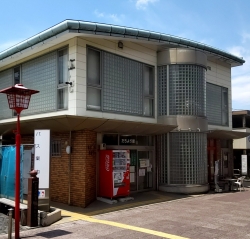Info Type
View Option
Sort by Category
Show all from recent
| 1. | Vivinavi Los Angeles I didn't think Trump would win.(4kview/133res) |
Free talk | Yesterday 20:48 |
|---|---|---|---|
| 2. | Vivinavi Los Angeles Is this a scam email ・ ・ ・ ・(310view/13res) |
Question | Yesterday 20:44 |
| 3. | Vivinavi Los Angeles Question about omikazuchi in Los Angeles(19view/1res) |
Question | Yesterday 20:38 |
| 4. | Vivinavi Hawaii handyman(520view/2res) |
Question | Yesterday 19:07 |
| 5. | Vivinavi Los Angeles Murmur Plus(429kview/3946res) |
Free talk | Yesterday 16:26 |
| 6. | Vivinavi Los Angeles Anything and everything related to travel to Japan...(858kview/4339res) |
Free talk | 2025/01/02 20:18 |
| 7. | Vivinavi Hawaii Experience in restaurant management in Hawaii.(580view/4res) |
Problem / Need advice | 2025/01/02 17:07 |
| 8. | Vivinavi Los Angeles I am looking for a place where my grandfather, gra...(959view/31res) |
Problem / Need advice | 2025/01/01 10:05 |
| 9. | Vivinavi Los Angeles language school(340view/9res) |
Problem / Need advice | 2024/12/29 08:52 |
| 10. | Vivinavi Los Angeles Let's gather the elderly ! !(334kview/870res) |
Free talk | 2024/12/28 19:21 |
Vivinavi Los AngelesAbout transformers for home bakeries
- #1
-
- waka
- 2022/01/03 05:40
I purchased a Panasonic Nogami home bakery. I saw information on the internet that transformers are good to buy in the U.S., so I am going to buy one. ? I hear that 3 times the voltage is good, but what about you guys ?
If you know anything about this, please let me know. I would appreciate it if you could let me know. Thank you very much.This text has been translated by auto-translation. There may be a slight difference between the original text and the translation. (Original Language: 日本語)
- #2
-
- 倍金萬
- 2022/01/03 (Mon) 08:44
- Report
WAKA,
Where did you purchase the home bakery? If you purchased it from an authorized dealer in the U.S., you do not need a transformer. There should be a label on the back or bottom of the product with the product number and specifications. If it says Volt " AC 115/120V Wattage XXX", then you can plug it directly into a wall outlet with the American voltage of 115 ~ 120 volts.
However, if you bought it from a dark vendor or an individual, or if it was sent from Japan, it may still be the Japanese voltage of 100V. Please look at the label above to judge. The Panasonic website in Japan says that the power consumption of the product is 370W, so a transformer that covers 400W-600W should be sufficient. However, please be aware that transformers themselves do not meet U.S. government safety standards for household electrical products, and therefore, all transformers on the market are, strictly speaking, illegal electrical products.This text has been translated by auto-translation. There may be a slight difference between the original text and the translation. (Original Language: 日本語)
- #3
-
- りえ
- 2022/01/03 (Mon) 18:15
- Report
By the way, I brought a Zojirushi rice cooker (2007) and a Panasonic home bakery (2015) from Japan, and they work fine when connected directly to an outlet without a transformer.
This text has been translated by auto-translation. There may be a slight difference between the original text and the translation. (Original Language: 日本語)
- #4
-
- 現在は
- 2022/01/03 (Mon) 19:21
- Report
If you are buying a transformer, the voltage ( V ) should not be tripled, but the wattage
should be higher than the voltage ( W ) 500W, so a home bakery should be around 1000W. \WBy the way, home bakery consumes about W 500W, so you need to buy a 1000W class transformer to avoid burning
.This text has been translated by auto-translation. There may be a slight difference between the original text and the translation. (Original Language: 日本語)
- #5
-
- 象印
- 2022/01/03 (Mon) 19:23
- Report
I hear rice cookers are replaced after 6-10 years.
What do you guys do ? If it works, do you use it forever ??This text has been translated by auto-translation. There may be a slight difference between the original text and the translation. (Original Language: 日本語)
- #8
-
- waka
- 2022/01/05 (Wed) 03:30
- Report
Thank you all !
I guess it can be used without a transformer !
On the other hand, I wonder if there are any broken ones without a transformer ?.This text has been translated by auto-translation. There may be a slight difference between the original text and the translation. (Original Language: 日本語)
- #9
-
- 倍金萬
- 2022/01/05 (Wed) 08:58
- Report
waka,
To tell you the truth, I am also an electrician by nature and use a transformer instead of a transformer, but there are some people on this forum who are very aggressive in their opinions, and I was "uncharacteristically" concerned about that. For the time being, I recommended the use of a transformer.Modern home appliance manufacturers design and manufacture their products to meet safety standards that allow them to withstand use in hostile environments by their consumers. I would venture to guess that they test their products to ensure that they will not catch fire even if the power supply voltage fluctuates by up to 30% over a specific period of time.
Furthermore, even in cooking with heat, such as in electric kettles, the structure is now such that heat is obtained by passing a special radio wave through a special metal, and the radio wave is controlled by an electronic circuit that can automatically control the circuit even if the power line voltage changes significantly. Therefore, there will be no problem even if you use a product with a standard AC 100V input at 120V. However, there is always a "just in case" possibility, so please keep that in mind.This text has been translated by auto-translation. There may be a slight difference between the original text and the translation. (Original Language: 日本語)
- #10
-
- waka
- 2022/01/05 (Wed) 11:34
- Report
Baikinman, thank you very much for your kind attention !
Since I am bringing this from Japan, I think I will take the risk and use it as is ! So far I have not seen any postings of people breaking without a transformer, and your advice and Baikinman's theory have convinced me. I am convinced by your advice and Baikinman's theory. Thank you !
but if you guys have any other information, please let me know again anytime !This text has been translated by auto-translation. There may be a slight difference between the original text and the translation. (Original Language: 日本語)
- #14
-
- 倍金萬
- 2022/01/07 (Fri) 08:43
- Report
Sorry to get technical again, but in the past, electric cookers such as electric kettles used electric line voltage ( 115/120 volts ) in the US directly into a heat exchange material such as nichrome wire to obtain heat output. Today, however, the heat exchange material has been replaced by the "IH ( IH )" method.
https://www.itmedia.co.jp/fav/articles/2012/27/news021.html
This is the technical term for electric line power as mentioned above IH = Induction Heating ( Induction Heating ) converts the power into heat, specifically ( the power of a high frequency ) magnet applied to an iron pot to convert it into heat power. At any rate, the power of heat is obtained in a much safer way, not by mucking around with nichrome wire as in the old days.
So, to return to the main topic, the heat return device can handle large changes in line voltage, and at the same time, the manufacturers of these electric kettles and cookers have designed and endurance tested their products so that they will not be affected by a voltage of 125V or so applied to a Japanese voltage of 100V for a long period of time. I believe that these electric kettles and cookers are designed and tested repeatedly to ensure that they will not be affected even when subjected to voltages of around 125V for long periods of time.This text has been translated by auto-translation. There may be a slight difference between the original text and the translation. (Original Language: 日本語)
- #15
-
As Mr. Doubokujinman said, as a safety test for products rated 100V, we have confirmed that there is no problem from a safety standpoint even if a voltage change of + -2 ~ 30% is applied to the product. However, the rated voltage in the U.S. is 120V, and it is necessary to consider that the voltage may vary by at least 20% above or below the rated voltage. Therefore, even if there is no problem for a short period of time, using a transformer with 120% of the rated voltage for a long period of time may increase the possibility of malfunctions. Therefore, I recommend the use of a transformer if possible. Hair dryers, futon dryers, etc., which generate a lot of heat, are especially dangerous because the heat generated is about 1 . 5 times higher and the temperature becomes too high. I use a transformer with a capacity of 1500W for futon dryers and microwave ovens. However, most electronic equipment such as TVs and PCs are rated at 100 ~ 230V, so a transformer is not necessary. Since it is difficult to obtain a transformer with a large capacity in the U.S., I order one from Amazon.com in Japan. I am not familiar with the design of IH cookers ( and the latest electric kettles ), so I cannot comment on what happens when a 100V product is used at 120V. However, IH heaters on the tabletop (1000W, 100V) seem to be working fine so far without a transformer. ( The time is so short ? it's a risk when it will fail. )
This text has been translated by auto-translation. There may be a slight difference between the original text and the translation. (Original Language: 日本語)
- #16
-
- 名無し
- 2022/01/29 (Sat) 12:40
- Report
I use a transformer for my hair dryer
but not my 1000W induction heater ( lol )This text has been translated by auto-translation. There may be a slight difference between the original text and the translation. (Original Language: 日本語)
Posting period for “ About transformers for home bakeries ” has been closed.
Please create new topic to continue the same topic.
- Find local business with Town Guide
-
- アフリカゾウやキリンなどが一緒に見渡せるアフリカ園や、ガラス越しにホッキョクグマ...

-
また、ビジターセンターのはく製や解説なども楽しめます。
+81-22-229-0631セルコムホーム ズーパラダイス八木山
-
- We renovate your garden and other areas ...

-
We have been in business for 50 years and are now in our third generation. At Saito, we put our customers' needs first and offer plans that will satisfy them. Please feel free to contact us. ・ Free Es...
+81-90-6113-5078株式会社斉藤
-
- For all your insurance needs, leave it t...

-
We handle all types of insurance for individuals and businesses. Insurance is very important to be prepared for emergencies. At Daiwa Insurance, we understand the needs of our clients and will help yo...
+1 (310) 540-8595Daiwa Insurance Marketing, Inc.
-
- Japanese cuisine restaurant boasts cours...

-
We are a Japanese restaurant located in front of Kimitsu Station, a 2-minute walk from the station. Please use our restaurant for various gatherings such as business entertainment, festive occasions ・...
+81-439-52-1010日本料理 和泉沢
-
- A museum of toys and play created in a f...

-
The Tokyo Toy Museum is a "citizen-operated" museum that is funded by donations of money based on the "one-shot director system" and donations of time by the "toy curators" who are volunteer staff.
+81-3-5367-9601東京おもちゃ美術館
-
- If you are wondering "I can't find what ...

-
We support your "desire to work" ! Southern Chiba Regional Youth Support Station ( Saposte ) provides employment support on behalf of the Ministry of Health, Labor and Welfare. Please feel free to con...
(0438) 23-3711ちば南部地域若者サポートステーション
-
- Founded in 1992, the largest Japanese so...

-
Every Saturday morning at East River Park, they work up a fresh sweat and represent Japan against the world in the COSMOPOLITAN SOCCER LEAGUE 2nd Division on Saturdays or Sundays during the season. ...
FC Japan NYC
-
- Directly managed by Sunrise Kujukuri, "H...

-
× We offer a wide variety of menu items made from fresh seafood, mainly from Chiba Prefecture, cultivated at Umi no Eki Kujukuri (Sea Station Kujukuri). Our most popular dish, the Habusuri Set Meal, ...
+81-80-7102-8069葉武里tassoの森の駅店
-
- Kameyama Onsen Retreat, a new brand of K...

-
This long-established ryokan is located on the shore of Kameyama Lake in Okuboso, the last unexplored region of Chiba Prefecture. Glamping facility "Grand Park Kameyama Onsen" Retreat experience "K...
+81-439-39-2121亀山温泉ホテル
-
- Specializing in hybrid cars ( New & Used...

-
Our Costa Mesa store has a large selection of new ・ used hybrid cars, mainly Prius, in various variations. The store opened in February 2016 and is very clean. We also have a kids space so childre...
+1 (714) 592-1150Eco Drive Auto Sales & Leasing Inc (Costa Mesa Office)
-
- Feel the atmosphere of a Japanese izakay...

-
① Thank you for your patience! Finally, Yakitori will be added to our lunch menu starting next Monday. Please enjoy our authentic Yakitori grilled over Binchotan charcoal for lunch! We look forward...
+1 (213) 625-1184Peace Dining (Izakaya Bizan)
-
- The only Japanese NATA certified athleti...

-
Dr. Koike is the only Japanese physician to hold both a DACNB (Diploma in Functional Neurology) and a DACBSP (Diploma in Sports Medicine), and is also a NATA certified athletic trainer. We have clinic...
+1 (408) 444-2202Health Integration Chiropractic
-
- MEXT ・ Foreign Ministry Support - Dispat...

-
It is the only Japanese government-supported supplementary school in Los Angeles, , where children of temporary residents or children who may live in Japan in the future can , learn Japanese schooling...
+1 (424) 396-3800Asahi Gakuen / Main Office
-
- Asia Pacific Healthcare Venture, a non-p...

-
Asia Pacific Healthcare Venture, a non-profit organization, provides comprehensive medical services for children and the elderly. We have affordable programs for those without insurance, internationa...
+1 (323) 644-3881Asian Pacific Health Care Venture, Inc
-
- We are an accounting firm in the United ...

-
Tax support between Japan and the U.S. ! Speedy procedures and aftercare ! Japanese ・ English either way.
+1 (877) 827-1040Todd's Accounting Services / Mayumi Ozaki (尾崎会計事務所)

